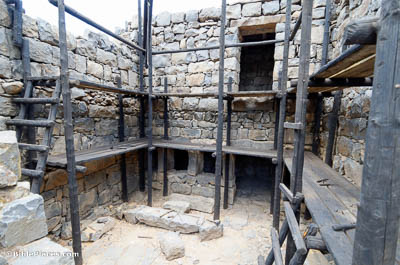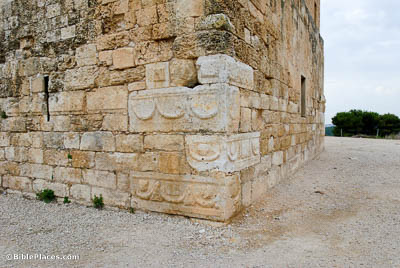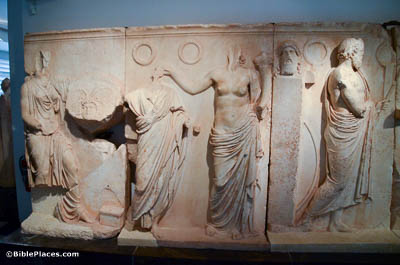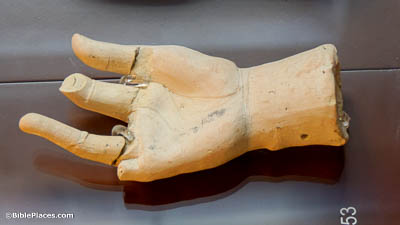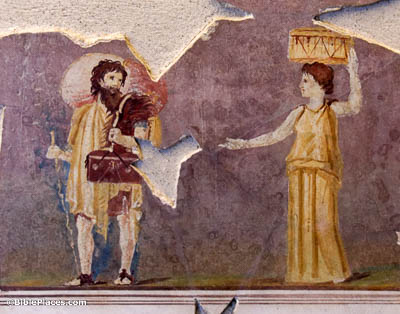You also, as living stones, are being built up as a spiritual house (1 Peter 2:5).
Peter applies the same description to his audience as he did to Christ, “living stones.” This metaphor is explained by his description of the result, a “spiritual house.” It can be understood, then, that his audience as living stones are those who are spiritually alive, who work righteousness and not wickedness. The display in this photo shows part of the process of assembling the stone walls of a house out of individual stones, with the use of scaffolding.
